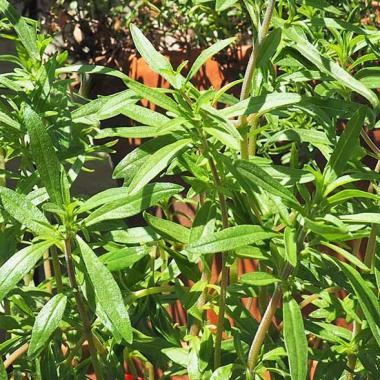


Summer Savory
Satureja hortensis

Summer savory is a leafy annual grown for it’s foliage and is an important herb for culinary use.
It grows 30 – 45cm tall with slender bronzy – green leaves and by mid-summer small tubular lilac or white flowers are formed. Frequent pinching out of leaves for use in the kitchen will delay flowering and also provide a continual source of new shoots for use in your cooking.
The seeds are best sown direct into the soil, or a large container, in early April. Make sure that the soil is rich and fertile for maximum leaf production, along with plenty of sun to promote sturdy growth.
The word Savory comes from the latin sapor meaning taste or flavour, this describes the salty, spicy flavour perfectly. It is one of the main ingredients of Herbes de Provence mix and is best used fresh when available, added near to the end of cooking time.
It can be widely used in virtually any savoury dish and also preserves like flavoured vinegars and pickles. It combines well with all of the other important culinary herbs such as basil, bay, rosemary, thyme, oregano, mint etc. Young sprigs are a really tasty addition to salads and sandwiches, giving a peppery, salty zest.
At the end of the season whole plants can be hung up and dried in a cool airy place before packing away the dry crumbled foliage. Alternatively freeze the leaves if you have an excess, in a zip top bag with all of the sir squeezed out.
Savory is a native of the eastern Mediterranean and the Romans were responsible for introducing this flavour packed herb to Europe and Great Britain, and it was the main spicy seasoning in use until the Spice Route opened up in later centuries.
In addition to culinary uses, this herb contains many antioxidants and essential oils, and has long been used to treat a whole range of ailments and even love potions!
There are innumerable recipes which benefit from the addition of summer savory. For something simple, serve any type of green beans with flavour enhancing savory:
Heat some butter in a small pan and add a teaspoon of chopped summer savory with a teaspoon of lemon juice.
Toss in lightly cooked green beans (or broad beans) and sauté very gently for a couple of minutes so that the beans are coated in flavour.